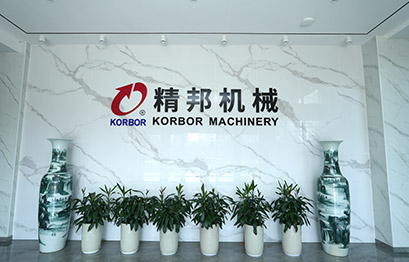What are the differences in the selection of materials and manufacturing processes for the camshafts of different levels of Mercedes models (such as A-class, C-class, and S-class), and how do these differences reflect the positioning of different levels of models?
Differences in materials and manufacturing processes for camshafts of different levels of models
1. Differences in material selection
A-class models
As an entry-level model, the Mercedes A-class pays more attention to cost control and cost performance. Its camshaft material may be ordinary alloy steel, which can meet the basic strength and wear resistance requirements. Anhui KORBOR Machinery Co., Ltd. can provide cost-effective alloy materials that meet the requirements of this level, while ensuring the performance of the camshaft and controlling costs. These alloy steels can be used in the manufacture of camshafts for A-class cars after reasonable composition blending and simple pretreatment.
C-class models
The C-class model is positioned as a mid-range luxury car with higher requirements for performance and quality. Its camshaft may use steel containing more alloy elements, such as chromium, nickel, etc. The addition of these elements can improve the strength, hardness and fatigue resistance of the camshaft. With 25 years of experience, Anhui KORBOR Machinery Co., Ltd. is able to accurately select and blend these high-performance alloys, and ensure their stable quality through strict raw material inspection.
S-Class Model
The S-Class is Mercedes' top luxury model, and has extremely high standards for the performance and quality of the camshaft. It may use special high-performance alloy materials, or even some specially treated metal composite materials. These materials have excellent strength, toughness and wear resistance, and can adapt to the working requirements of the engine under high load and high speed. Anhui KORBOR Machinery Co., Ltd. has rich experience in the application of high-performance alloys and can provide S-Class cars with high-quality materials that meet their strict standards.
2. Manufacturing process differences
A-Class Model
In terms of manufacturing process, the camshaft of the A-Class car may use relatively conventional processing technology. For example, the forging process may have relatively low precision requirements, and the tolerance control range in the machining process is relatively wide. The heat treatment process is also mainly to meet basic performance requirements, such as ordinary quenching and tempering. Anhui KORBOR Machinery Co., Ltd.'s efficient production lines enable large-scale, low-cost production of camshafts for A-class vehicles, while ensuring product quality meets standards through strict quality control.
C-class models
The manufacturing process of C-class camshafts is more sophisticated. The forging process uses more precise molds and process parameter control to ensure the shape and dimensional accuracy of the camshaft. For machining, high-precision CNC machine tools are used to strictly control the tolerance range. The heat treatment process will be more complex and precise, such as the use of advanced technologies such as induction hardening to improve the surface hardness and wear resistance of the camshaft. Anhui KORBOR Machinery Co., Ltd. follows the IATF16949:2016 standard and conducts multi-level and comprehensive quality control of the production process to ensure the high quality of C-class camshafts.
S-class models
The manufacturing process of S-class camshafts has reached the extreme. When forging, advanced processes such as isothermal forging may be used to obtain a more uniform structure and higher mechanical properties. Machining will use ultra-precision machining technology, and the tolerance will be controlled within a very small range. The heat treatment process will combine a variety of advanced methods, such as nitriding, carbonitriding, etc., to further improve the performance of the camshaft. The technical team of Anhui KORBOR Machinery Co., Ltd. continues to innovate and can use advanced processes and equipment to meet the high requirements of S-class car camshafts.
3. The difference reflects the positioning of different levels of models
A-class models
A-class cars are positioned for young consumers and entry-level luxury car markets, focusing on affordable prices and daily practicality. Camshafts made of ordinary materials and conventional manufacturing processes can reduce costs while ensuring basic performance, making vehicle prices more competitive and in line with their market positioning.
C-class models
C-class cars are aimed at mid-level consumers who pursue quality and performance. Using better materials and more sophisticated manufacturing processes can improve the performance and reliability of the camshaft, thereby improving the overall performance and stability of the engine. This matches the mid-level luxury positioning of C-class cars and meets consumers' higher expectations for vehicle quality and performance.
S-Class Model
The S-Class represents Mercedes' top luxury and technological strength. The use of special high-performance materials and extreme manufacturing processes can enable the camshaft to achieve the best performance state, ensuring that the engine can run stably and efficiently under various working conditions. This high-quality camshaft reflects the top positioning of the S-Class and provides consumers with an excellent driving experience.
Anhui KORBOR Machinery Co., Ltd., with its rich experience, efficient production capacity and strict quality control system, can provide MERCEDES Car Camshaft products that meet the positioning of each model according to the needs of Mercedes' different levels of models, and become its reliable partner.

 English
English 中文简体
中文简体 русский
русский Español
Español











